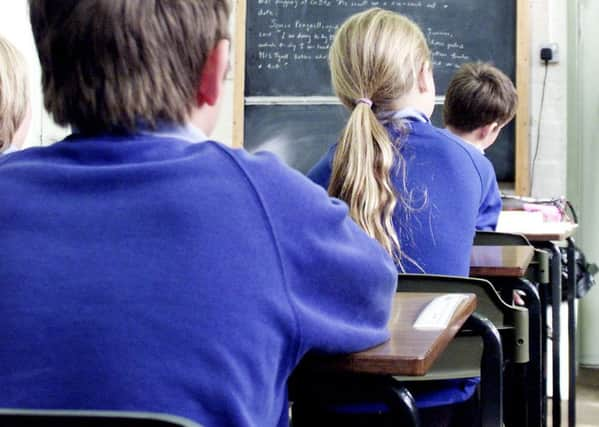Schools in Northamptonshire excluding more and more pupils


On average 28 children were excluded from schools in the area on every school day last year.
The revelation comes after a warning from MPs that parents and children are having to contend with a “scandal of ever-increasing exclusions” in a system that is like the “Wild West”.
Advertisement
Hide AdAdvertisement
Hide AdIn the 2016-17 academic year, schools in Northamptonshire handed out at least 5,399 exclusions, according to data from the Department for Education.
Each excluded pupil received an average of 2.1 exclusions over the school year, and lost around four days of teaching apiece.
The number of exclusions represents an increase of 14% from the previous year when 4,752 exclusions were recorded, and an increase of 52% from the level it was at five years ago.
Although the school population has been increasing at the same time, the rate at which exclusions have increased is higher than the rate of population growth.
Advertisement
Hide AdAdvertisement
Hide AdThis means exclusions are now far more prevalent relative to the number of school children than they were a year ago, increasing from 4.2 exclusions per 100 pupils to 4.7.
The majority of the exclusions in 2016-17 - 3,885 of them - were in secondary schools, with 1,211 in primary schools and 302 in special schools, which cater for pupils with special education needs or disabilities.
However, when the size of the schools’ populations are taken into account, it was special schools that gave out the most exclusions, with a rate of 19.2 exclusions per 100 pupils.
This compared to a rate of 8.4 in secondary schools and 1.8 in primary schools.
Advertisement
Hide AdAdvertisement
Hide AdThe most common reason for a child to be excluded from a school in Northamptonshire was for persistent disruptive behaviour, which accounted for 23% of exclusions.
In England, exclusions numbered around 389,600 in 2016-17, up from 346,000 the previous year.
This represents an increase from 4.4 exclusions per 100 pupils to 4.9.
Ministers from the cross-party House of Commons education committee have this week published a highly critical report on the current exclusions system in England.
Advertisement
Hide AdAdvertisement
Hide AdA rise in “zero-tolerance” behaviour policies may mean that “pupils are punished and ultimately excluded” for incidents that “could and should” have been better managed, the report stated.
The MPs also criticised a “lack of moral accountability” among many schools which have little incentive to keep on students that are seen as “difficult or challenging”.
Committee chair Robert Halfon MP said: “Today, we face the scandal of ever-increasing numbers of children being excluded and being left abandoned to a forgotten part of our education system which too often fails to deliver good outcomes for these young people.”
Mr Halfon and his fellow committee members are calling for a “bill of rights” for pupils and their parents, which will include a commitment that schools do not rush to exclude pupils.
Advertisement
Hide AdAdvertisement
Hide AdA spokesman for the Department for Education said: “Schools should only use permanent exclusions as a last resort but we do support teachers in taking proportionate and measured steps to ensure good behaviour in schools.
“Whilst we know there has been an increase in exclusions there are still fewer than the peak ten years ago.
“We recognise some groups of pupils are more likely to be excluded than others which is why we launched an externally-led review to look at how schools are using exclusions and why certain groups are disproportionately affected.”